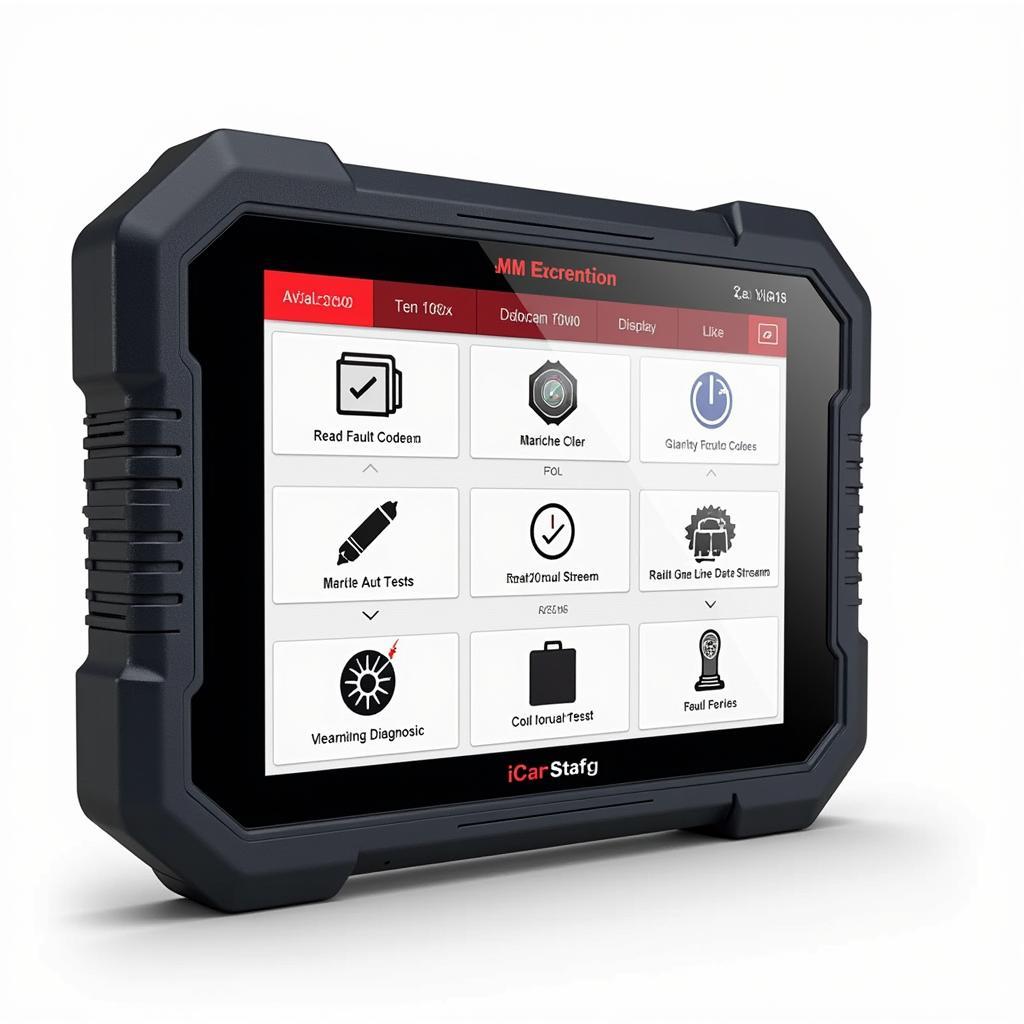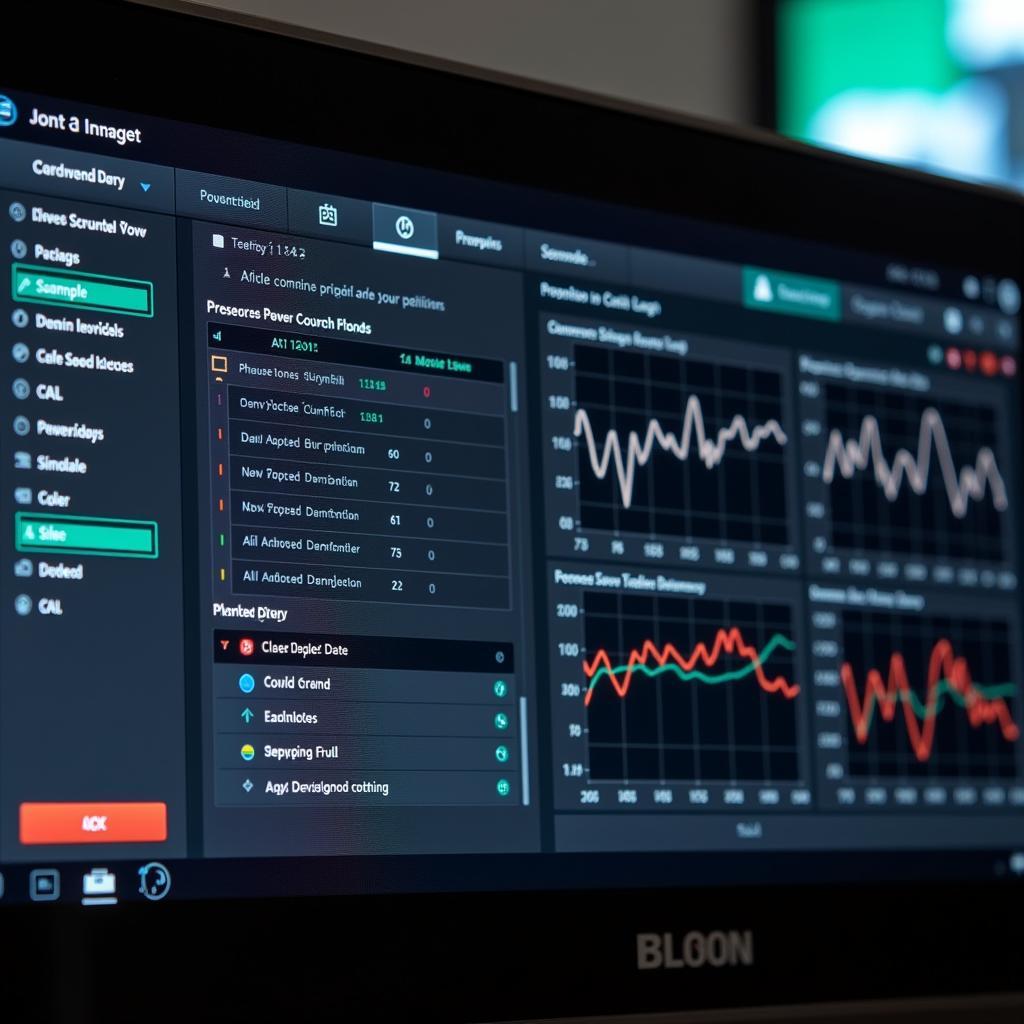Dealing with a faulty Miele dryer? It can be frustrating, especially when you’re unsure of the root cause. Thankfully, Miele Dryer Diagnostic Tools can help you pinpoint the issue quickly and efficiently. Whether you’re a DIY enthusiast or a professional technician, these tools offer valuable insights to get your dryer back up and running.
Understanding the Importance of Diagnostic Tools
Before we delve into specific tools, let’s understand why diagnostics are crucial. Modern Miele dryers come equipped with sophisticated electronics and sensors. When a problem occurs, these components log error codes that provide clues about the malfunction.
[image-1|miele-dryer-error-codes|Miele dryer displaying error codes on its control panel|A close-up image of a Miele dryer’s control panel displaying a series of alphanumeric codes, indicating an error has been detected. These codes are crucial for diagnosing the specific issue with the dryer.]
Diagnostic tools act as a bridge, translating these codes into understandable language. This information enables you to:
- Identify the exact problem: No more guessing games! Diagnostic tools eliminate the ambiguity, giving you a clear understanding of what’s wrong.
- Save time and money: By accurately identifying the issue, you avoid unnecessary repairs or part replacements.
- Make informed decisions: Armed with precise information, you can decide whether to tackle the repair yourself or call in a professional.
Types of Miele Dryer Diagnostic Tools
Several diagnostic tools are available, each offering a different level of functionality:
1. Built-in Diagnostic Systems
Many modern Miele dryers have built-in diagnostic systems. These systems often display error codes directly on the dryer’s control panel. By referring to your dryer’s manual, you can decipher these codes.
2. Universal Multimeters
A multimeter is an essential tool for any electrical troubleshooting, including dryer repairs. It measures voltage, resistance, and current, helping you test various components like:
- Thermal fuses: Check for continuity to ensure they’re not blown.
- Heating elements: Test for resistance to see if they’re functioning correctly.
- Door switch: Verify if the switch is working properly.
[image-2|technician-using-multimeter-on-dryer|Technician testing dryer components with a multimeter|A technician wearing safety gloves is shown using a digital multimeter to test the continuity of a dryer’s thermal fuse. The multimeter displays a reading, indicating the status of the fuse.]
3. Miele-Specific Diagnostic Software
For professional technicians, Miele offers specialized diagnostic software. These software suites connect to the dryer’s electronic control unit (ECU) via a laptop or dedicated device. They provide in-depth information, including:
- Real-time data monitoring: Observe sensor readings, program parameters, and more.
- Advanced error code interpretation: Access detailed descriptions and troubleshooting guides for specific error codes.
- Component activation and testing: Remotely activate components like the motor or heating element for testing purposes.
“Miele’s diagnostic software is an invaluable asset,” says John Smith, a senior appliance repair technician with over 20 years of experience. “It allows us to quickly diagnose complex issues and provides the necessary information to perform efficient repairs.”
How to Use Miele Dryer Diagnostic Tools
Using diagnostic tools effectively requires some basic knowledge. Here’s a general guide:
- Safety First: Disconnect the dryer from the power source before any inspection or testing.
- Consult the Manual: Always refer to your dryer’s user manual for specific instructions on accessing and interpreting error codes.
- Start with Basic Troubleshooting: Before diving into diagnostics, rule out simple issues like clogged vents or tripped breakers.
- Use Tools Appropriately: Understand the capabilities and limitations of each tool. If unsure, consult a professional.
Common Miele Dryer Problems and Their Error Codes
While Miele dryers are known for their reliability, certain issues can arise. Here are a few examples:
- Error Code F:01: Indicates a problem with the water supply or drainage system (for condenser dryers). Check the water inlet hose, drain hose, and pump for blockages.
- Error Code F:23: Signals a malfunctioning heating element. Use a multimeter to test for continuity and resistance.
- Error Code F:57: Points to a faulty door switch. Inspect the switch for damage and test its functionality.
[image-3|miele-dryer-parts-diagram|Exploded view of a Miele dryer with labeled components| A detailed illustration showcasing the internal components of a Miele dryer. Each part, including the heating element, thermal fuse, door switch, and motor, is clearly labeled, providing a visual reference for troubleshooting.]
Remember, these are just a few examples, and your dryer might display different codes depending on the specific model and issue.
Conclusion
Miele dryer diagnostic tools are essential for anyone looking to troubleshoot and repair their dryers effectively. From simple error code interpretation to advanced data monitoring, these tools provide the information you need to make informed decisions. By understanding the different types of tools and their applications, you can save time, money, and frustration when dealing with dryer malfunctions.
Need assistance diagnosing your Miele dryer? Contact the experts at ScanToolUS. We offer a wide range of diagnostic tools and expert advice to help you get your dryer back in perfect working order.
ScanToolUS
Phone: +1 (641) 206-8880
Office: 1615 S Laramie Ave, Cicero, IL 60804, USA
FAQs
1. Are Miele dryer diagnostic tools compatible with all Miele dryer models?
Not all diagnostic tools are compatible with every Miele dryer model. Always check the tool’s specifications or consult with the manufacturer to ensure compatibility.
2. Can I purchase Miele-specific diagnostic software as a homeowner?
While some diagnostic software might be available for purchase, they are primarily designed for professional technicians with the necessary expertise to interpret the data.
3. Is it safe to use a multimeter on my dryer?
Using a multimeter can be dangerous if you’re not familiar with electrical safety procedures. Always disconnect the dryer from the power source before testing and seek professional assistance if needed.
4. What should I do if my dryer still doesn’t work after using diagnostic tools?
If the diagnostic tools don’t pinpoint the issue or you’re uncomfortable performing the repair yourself, it’s best to contact a qualified Miele appliance repair technician.
5. How often should I use diagnostic tools on my Miele dryer?
It’s not necessary to use diagnostic tools regularly. Use them only when your dryer displays error codes or exhibits unusual behavior.



